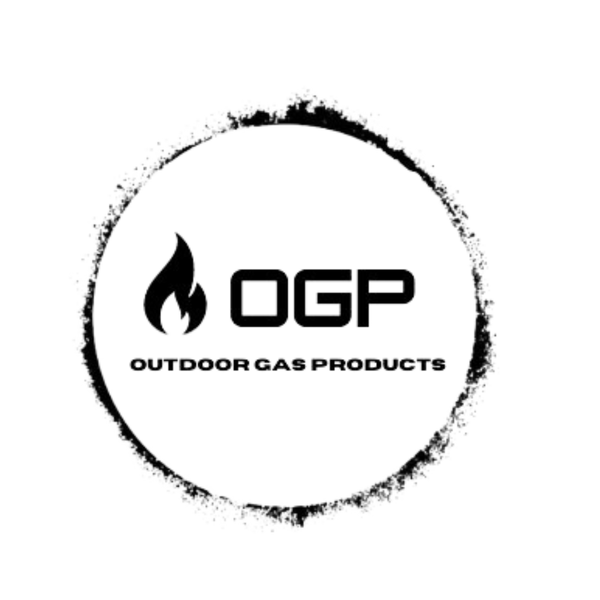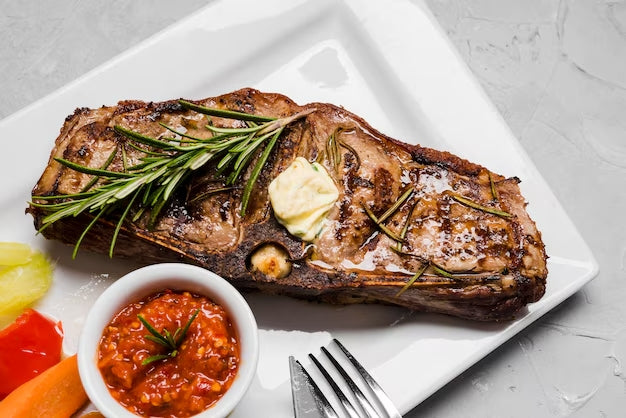When we talk about grilling, one of the first things that comes to mind is meat. The way the smoky char of the sear melts together with the soft, juicy interior of any meat prepared right on the grill leaves nothing to be desired, and the only feeling better than that is the satisfaction that you created that sensational flavor by yourself. When you’re a beginner grillsmith, that perfect bite can feel lightyears away. The best way to bridge the gap between your technical skills and your perfect outcome besides endless practice is to adapt your cooking style to work for you. There’s a lot of ways you could accomplish this, but today we’re going to go over a way to sear your meat that’s perfect for delicious outcomes for chefs at any level! Grab your tongs and don your apron, because the reverse sear is just what you need to get your grilling game on point.
The Standard Sear: Classic and Charismatic
Before we get into the reverse sear, let’s lay some groundwork. You’re probably at least a little familiar with a standard sear, the best option for chefs looking to be speedy. This method requires exactness with your cooking time, but it can be perfect for a seasoned griller to display what they know. If you’re interested in more information, we have this article on how to prepare the perfect steak this way.
Technique Breakdown:
- High Heat: Preheat your grill to high, around 425-450 degrees.
- Direct Heat: Place your seasoned meat right on the heat.
- Sizzle Time: Grill both sides for a few minutes depending on how thick your meat is, and await the ideal crust.
Pros:
- Speedy Satisfaction: Takes hardly any time to create a perfect piece of meat.
- Chars to Perfection: Achieves the perfect smoky, savory crust.
- Good Old-Fashioned Way: Grillmasters have been doing it this way for generations.
Cons:
- Risk of Overcooking: Meat can end up cooking unevenly, particularly with thicker cuts.
- Less Control: Necessitates precise timing and constant attention to avoid burning.
The Reverse Sear: Slow and Steady
It can be hard to imagine a deviation from the standard method of cooking your meat, but the reverse sear leaves little to be desired by any chef. Similarly to sous vide, this method involves starting your cooking process low and slow, giving chefs a much longer window of perfection for the juiciest, most accurately cooked meat possible. Once the meat is mostly done, it should be set atop your grill and cooked on high heat to completion, allowing for the same mouthwatering char that traditionally seared meat is known for.
Technique Breakdown:
- Low and Slow: Begin by cooking your meat indirectly on low heat (225-275°F) until it reaches about 15°F below your target doneness. This can take as much as 40 minutes, so this is a great time to prepare any sides you might be craving.
- Rest and Relax: Remove the meat from the grill and let it rest while you crank up the heat to high.
- Sear to Perfection: Return the meat to the grill over high heat for a quick sear on each side to achieve that perfectly caramelized crust.
Pros:
- Even Doneness: Decreases risk of overcooking or unwanted pinkness greatly.
- Intense Flavor: Gives flavors more time to develop and sinks them farther into the cut.
- Control Freak’s Dream: Allows chefs precise control over temperature and sear.
Cons:
- Time-Consuming: Takes patience due to the longer cook time.
- Thinner Crust: Although the crust is still present, oftentimes it will be thinner than that of traditionally seared meat.
Which Sear Reigns Supreme?
With so many unique advantages held by either cookstyle, it is impossible to determine which style is better without taking your personal preferences and style into account. A normal sear is typically the favorite of chefs who seek a fast-paced and skill-intensive culinary adventure. Reverse searing is often the premiere process for perfectionists who prioritize a time-intensive quest for flavor over speed and showmanship. There are a lot of other factors to consider, so we’ve taken the liberty of breaking them down for you a little further.
Flavor Dynamics: Both of these methods put a unique spin on the flavor profile of your meat. A normal sear seals in your juices fast, producing a more robust crust and an internal texture that may vary according to the thickness of the cut. The reverse sear develops a much more complex flavor profile which, although somewhat less charred, promises a consistently tender and immensely flavorful feast.
Texture Matters: If you’re a fan of texture, you might fall in love with the tenderness and evenness of cooking that results from the time intensive nature of a reverse sear. Steaks cooked in this way, particularly medium or medium-rare ones, will develop a beautiful pink interior that stretches nearly all the way to the edge, enveloped by an insatiable sear.
Temperature Precision: If you’re the type of chef who revels in precise methodology, reverse searing provides an opportunity like none other to showcase the value of precision in cooking. The initial slow cooking allows for an unmatched control of internal temperature, and the high-heat sear at the end allows for maintenance of that unmistakable grill flavor, allowing for perfect results every time.
Culinary Adventure: Regardless of whether you seek out the sizzle of a standard sear or the slow dance of reverse searing, being comfortable with either technique can elevate your grilling to new levels. Experimenting with different cuts, seasonings, and small changes in technique are the cornerstones of developing your cooking style, and ultimately finding the intersection of comfortability and satisfying flavor that works best for you will make your grilling a cut above the rest.
Regardless of whether you seek out the sizzle of a standard sear or the slow dance of reverse searing, being comfortable with either technique can elevate your grilling to new levels. Experimenting with different cuts, seasonings, and small changes in technique are the cornerstones of developing your cooking style, and ultimately finding the intersection of comfortability and satisfying flavor that works best for you will set your grilling a cut above the rest. Every unique technique provides an individual set of advantages that create a beautifully original flavor layered around the gratification of a perfectly charred sear.
Take advantage of the rest of this summer to find the perfect method for you, and allow us to elevate your outdoor experience!

